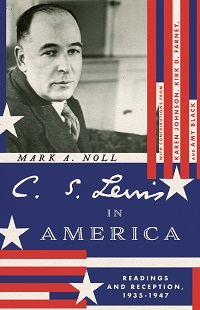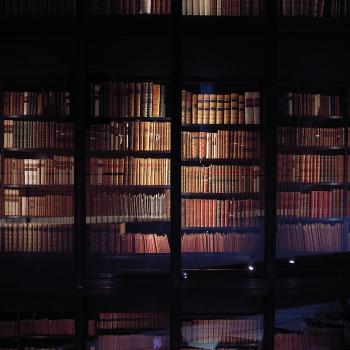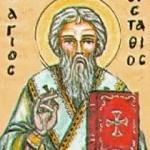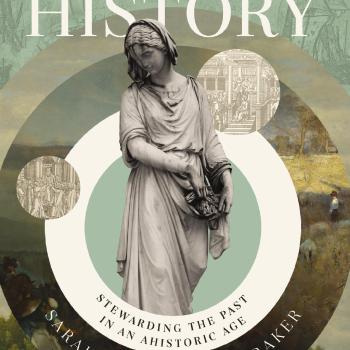“I distrust folks who have ugly things to say about Karl Barth. I like old Barth. He throws the furniture around.” Flannery O’Connor
One of the astonishing things about contemporary U.S. Christianity is the continuing popularity of C.S. Lewis. If you might have grown up in a Christian (evangelical) cultural bubble, then the fact that Christians read Lewis is not so shocking. For instance, it is almost guaranteed that if you attended Christian school then you probably read The Lion, the Witch, and the Wardrobe (not to mention watched the film) or at least something from Lewis’s Christian essays (Mere Christianity probably the best bet). I am old enough to remember the old cartoon as my entryway to Narnia during a special chapel period at my Christian school (we unfortunately did not have better options back in the early 1980s-the same goes for Tolkien’s classics, even though my eleven year old son thinks the cartoons are fantastic). My family would visit the Christian bookstore quite often, and it was a guarantee that a whole shelf would be filled with Lewis’s books. With such an endless supply that means there was an insatiable demand.

Historian Mark A. Noll’s new book delivers a service by providing historical distance to us raised in the evangelical bubble. He points out that at one point in recent history U.S. Americans started to read Lewis. You mean his books were not always available in my local Family Christian bookstore? It is difficult to think of a time before Lewis for U.S. American Christians, but as Noll illustrates not every Christian was a fan of his work. One might think that since the reception begins around the war years that the criticism would be lacking generosity―because we are more “tolerant” today than we were in the past (please note the sarcasm). Noll shows that historical circumstances often mirrored how particular Christian circles (Catholic, mainstream media, Protestants, and Evangelicals) responded to Lewis’s earliest writings, and even though there were disagreements, there was enough to admire about Lewis among these traditions that they promoted his work (Noll, 122). He argues that we can learn about how to address the culture today from Lewis’s reception (Noll, 6).
Amy E. Black closes Noll’s book declaring: “We need bridge builders, people who have the gifts to communicate across divides and bring people together. Like Lewis, we need to find creative and distinctive ways to share Christianity that connect across traditions and perspectives” (133). Noll notes we live under different historical circumstances but the fact that Christians and non-Christians from different walks of life love to read Lewis, we would be foolish not to try to learn what makes him so approachable.
A few thoughts on Lewis’s reception. First, we are living in a time period where everything seems to be polarized (note my earlier comment on tolerant readers). Christian intellectuals must navigate through these perilous times. Lewis demonstrates that “Christian learning can be pursued as a God-given task” (Noll, 6). The best writers of the Christian tradition understand their task as faith seeking understanding. One might argue that this has been the case for almost two thousand years from St. Augustine till today. Lewis is so good at this task that book after book comes out utilizing his thought to find inspiration about how best to perform Christian learning.
Second, the Swiss Protestant theologian Karl Barth is arguably the most important theologian of the twentieth-century. He was mostly a contemporary of Lewis. However, it has only been in recent decades that U.S. American evangelical suspicion has calmed down about Barth. My undergraduate research was about the evangelical reception (or misconception) of Barth.
 Karl Barth
Karl Barth
Noll’s study brought back memories of the books I read during my senior year of my undergraduate studies. I read from an assortment of thinkers from Donald Bloesch, Hans Urs Von Balthasar to Bernard Rimm, examining the broad reception of Barth’s theology, with Philip Thorne’s study a helpful summary of the reception. One of the severest critics of Barth’s work was by Reformed theologian Cornelius Van Til. Van Til lumps Barth with his fellow European Protestant pals like Emil Brunner, Rudolf Bultmann and Paul Tillich as an existentialist even though Barth’s theology has many differences with them. Unfortunately, this was the time period when these thinkers were all lumped under the umbrella called neo-orthodoxy. However, just a cursory reading of Barth’s mammoth output reveals a reverence toward the Bible, early Christian creeds, and the magisterial Reformers Luther and Calvin. Still, leave it to Van Til to ultimately not like both Lewis and Barth (Noll, 110-2; Thorne, 33-41). Thorne shows that he somewhat soured the reception among evangelicals toward Barth, but he had no such luck with Lewis.
The acceptance of Lewis as a resource for Christian learning especially among evangelicals came much quicker than Barth. Perhaps this had to do with the fact that Lewis was foremost a novelist and so his audience first read the beloved children’s literature then took a look at his Christian essays. Or perhaps this had more to do with Barth’s theology, steeped in the Continental tradition, being more difficult to decipher, whereas Lewis’s theology was more readable (could also be that Barth wrote books that look like encyclopedias). Much like Noll’s book on Lewis, years ago Bernard Ramm’s book After Fundamentalism declared that Barth will continually be an important conversation partner for evangelicals (Thorne, 183-4). A recent book on Karl Barth and Pentecostal Theology shows that Ramm was right.
Lewis and Barth are now considered two of the titans of modern Protestant Christianity, both popular among U.S. American evangelicals. Noll’s book helps illustrate the fact that at one point in history that U.S. Christians from different traditions began reading Lewis and Barth. Lewis continues to enjoy a broad readership among people of all ages. As much scholarship shows, Catholic readers of Barth and Lewis were some of the most generous. One of the most surprising, as seen from the epigraph quoted from Ralph C. Wood’s book Flannery O’Connor and the Christ-Haunted South, comes from Catholic short story writer Flannery O’Connor (Wood, 10). Believe it or not, unlike O’Connor, who owned and enjoyed Barth’s book Evangelical Theology, it seems Lewis had not read much of Barth (Noll, 98).
 Flannery O’Connor
Flannery O’Connor
As Wood’s book title illustrates we have been living in a Christ-haunted world, not a Christ-centered one (Wood, 264). We can agree with Noll that we learn from Lewis to speak into the culture as bridge builders, yet like O’Connor asserts, throw the furniture around like Barth. In a Christ-haunted world, Christian learning needs both.












